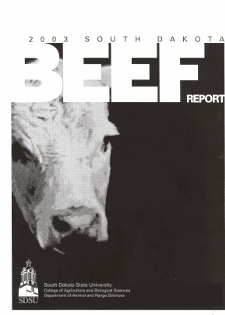Document Type
Report
Report Number
2003-11
Publication Date
2003
Summary
Lifetime implant strategies were developed and applied to steer calves. The design was intended for evaluating strategies rather than specific implants. Strategies involving increasing potency of products used at common stages of production. Initial implants were administered when calves were approximately 2 mo of age. Implants did not increase BW at weaning or after backgrounding (P > 0.10) although they did increase ADG 5% over non-implanted controls during backgrounding (P < 0.05). The influence of implants on ADG was more pronounced during the finishing phase of production. Implants increased (P < 0.05) finishing phase ADG 18%, DMI 7.2%, and feed efficiency 9.4%. Overall post-weaning ADG increased 12% (P < 0.05) due to implants. Performance results changed when evaluating data on a live versus carcass weight basis due to differences in dressing percent. Increasing potency of the implant strategies caused progressive increases (P < 0.05) in carcass weight and ribeye area. Implanted steers produced fatter carcasses than did non-implanted steers (P < 0.05). There were no advances in skeletal or lean maturity attributable to the potency of the implant strategy. The frequency of carcasses grading Average Choice or better declined with implants. Implant strategies had no relevant influence on shear force. Overall, 12% of carcasses had a shear force > 5.0 kg (undesirable).
Number of Pages
10
Format
application/pdf
Language
en
Publisher
South Dakota State University
Rights
Copyright © 2003 South Dakota State University
Recommended Citation
Pritchard, Robbi H.; Bruns, Kelly W.; and Boggs, Donald L., "A Comparison of Lifetime Implant Strategies for Beef Steers" (2003). South Dakota Beef Report, 2003. 12.
https://openprairie.sdstate.edu/sd_beefreport_2003/12

